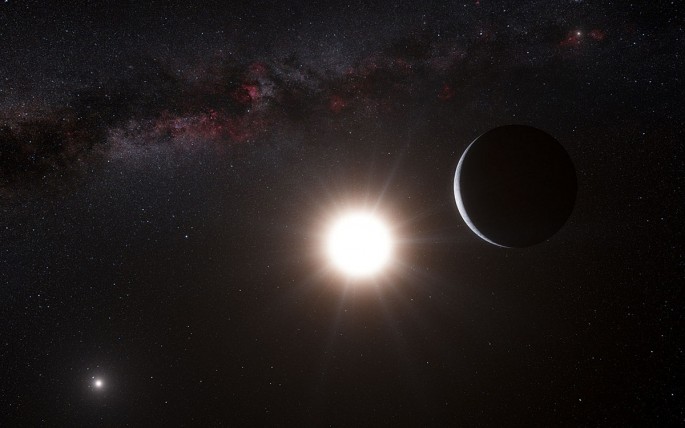A group of astronomers suggest the possibility of the existence of twin Earth-like planets close to our solar system. However, these planets are thought to be having high temperature which may not be suitable for biological beings.
A science news publication New Scientist reports that the discovery of these two Earth-like planets may indicate at the possibility of existence of more planets with climate hospitable for sustenance of life.
The recently discovered exoplanets are said to be orbiting a binary star system called Alpha Centauri. Being closest to our solar system, the star system is just 4.3 light years away.
According to the report, the discovery of first planet belonging to the star system was made in 2012 and it was called Alpha Centauri Bb. This planet was apparently revolving around the smaller of the stars Alpha Centauri B. The lack of evidence led to dismissal of the theory. But group of scientists from University of Cambridge delved deeper into the matter with a different technique.
The report notes that scientists previously based their findings on the radial velocity method. But Brice-Oliver Demory of Cambridge University and his colleagues collected data using Hubble Space Telescope. Using Hubble, scientists looked for signals indicating dip in the light from Alpha Centauri B occurring when the planet passes in front of the star.
The team of researchers spent 40 hours in observing Alpha Centauri B in 2013 and 2014. The observation of 2013 data shows the signs of transit. However, it appears it was longer than they anticipated it to be. As for 2014 data, the signal completely vanished.
According to the report, the findings led scientists to believe that there is another Earth-sized planet orbiting in the star system with a year around 20.4 days. The report notes that if the discovery is confirmed, there might be more planets in the system with more hospitable environment.
"If you see one planet, the chance is there are other planets in the system," Demory was quoted as saying.
Meanwhile, Paul Wilson, a scientist from the Paris Institute of Astrophysics in France looks forward to a good enough evidence that fully supports the discovery. "They work they've done holds tight; they give a very well balanced view on what this transit could be. I hope they will be able to detect an Earth-sized planet through the transit method. That would be fantastic," Wilson said.



























